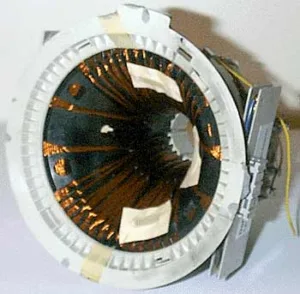To make a beam of electrons do something useful, it has to be deflected from its course in some manner so as to make a trace or scan across the CRT’s faceplate. There are two methods used to do this: with an electrostatic charge and an electro-magnetic field.
Electrostatic deflection uses pairs of charged plates in the neck of the CRT to repel and attract the beam of electrons. The negatively charged plates repel the electrons, as in the negatively charged control grid, and the positively charged plates attract the beam, as does the positively charged anode. The beam passes between the pairs of oppositely charged plates and, as their polarity and the strength of their charge is altered, is deflected from side to side. With one pair of plates mounted vertically and the other horizontally, the beam can be deflected towards any part of the screen.
Although electrostatic deflection is extremely fast and, consequently, ideal for CRTs used in oscilloscopes, at the energy levels of the electron beams used in TV and monitor CRTs it has insufficient influence on the beam to be useful. In these CRTs, electro-magnets take the place of the charged plates, creating two magnetic fields at right-angles to each other to control the beam’s deflection. These electro-magnets are usually mounted outside the CRT, at the point where the neck meets the funnel, and consist of a series of windings moulded to fit the glass of the tube. This is the deflection yoke.

